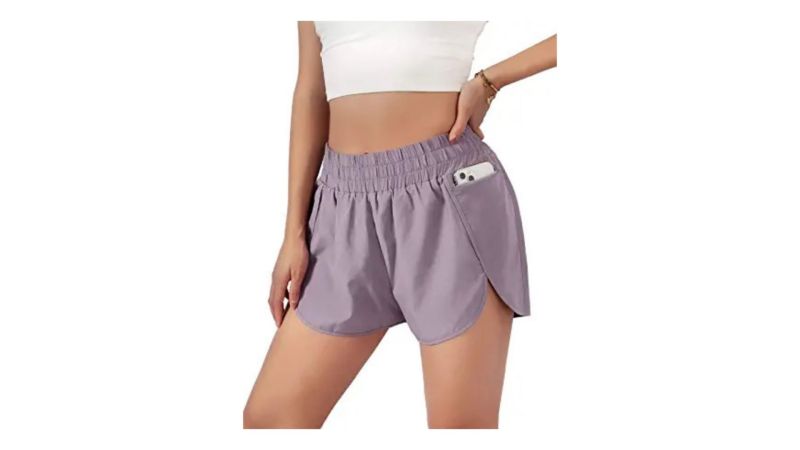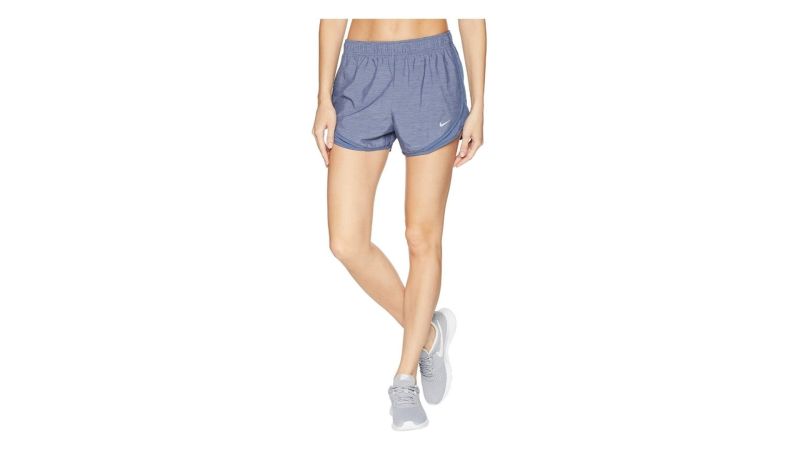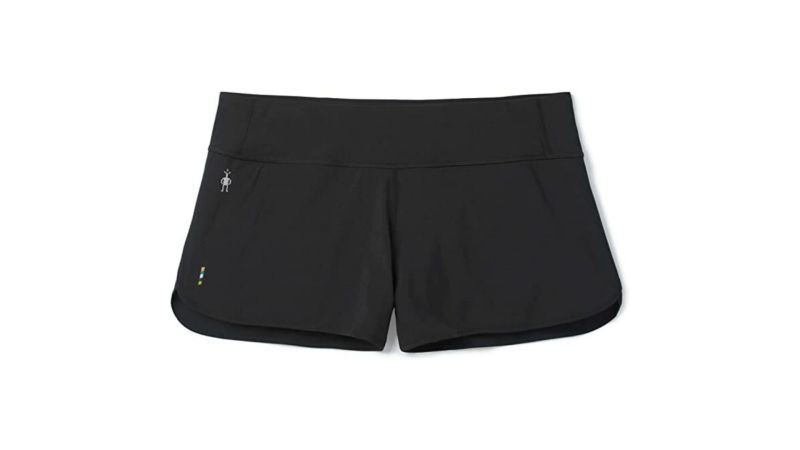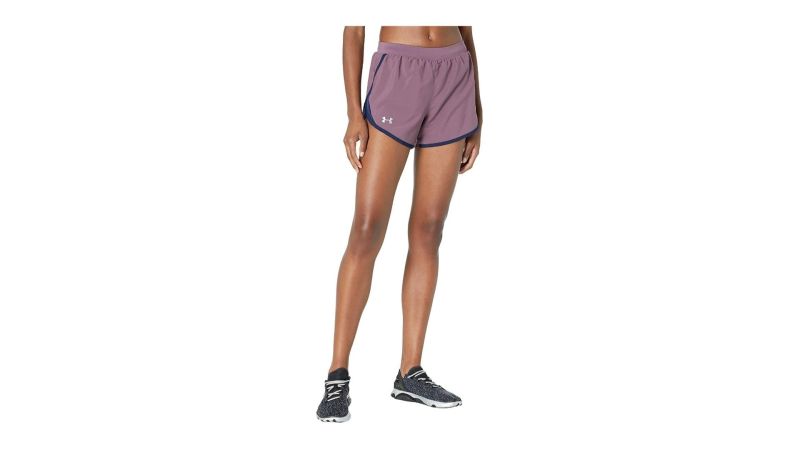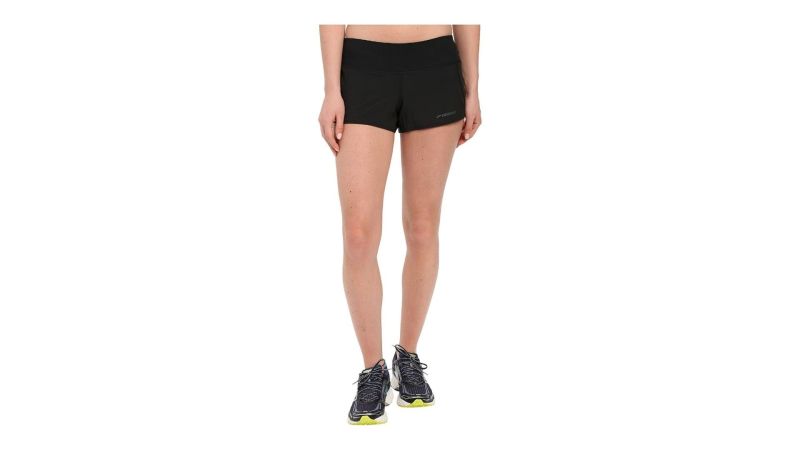We may earn revenue from the products available on this page and participate in affiliate programs.

Whether you only run a few times a week or you enjoy pounding the pavement for hours at a crack, your clothing can either make or break the happy factor of your workouts, investing in the best running shorts for women crucial to your performance and comfort. I know this first hand after my time in the Marine Corps: Our physical fitness bottoms were either the abominably scanty green silkies, which felt like wearing underwear in public, or a heavy green basketball-type short, which felt like wearing a bunched-up diaper and chafed my inner thighs.
Fast forward 20 years, and high-quality, affordable clothing and shoes are still essential to my running enjoyment. To that end, comfortable, lined shorts that wick away moisture, won’t chafe, and have pockets for all of your on-the-go supplies are essential. To make it easy for you, we’ve researched and tested a lot of women’s running shorts so you don’t have to, because whether you run two times a year for the physical fitness test or you are crazy enough to run ultramarathons, we all deserve well-fitting athletic gear that won’t chafe, get soggy, or redline your budget.
Best Overall
Blooming Jelly Quick Dry Running Short
Best Value
Nike Tempo Running Short
Editor’s Pick
SmartWool Women’s Merino Sport Lined Short
Best Running Shorts for Women with a Flat Waistband
Under Armour Women’s Fly-By 2.0
Best Running Shorts for Women in Three Inseam Lengths
Brooks Chaser Short
Why you should trust us
As a retired Marine, I’ve done my fair share of mandatory fun runs, but I didn’t discover the mental and physical pleasures of distance running until midway through my career. Since then, I’ve logged in eight marathons and multiple 50K and 50-mile ultra races. I tend to average between 30 and 45 miles of running per week depending on how much time I have, so you can imagine I have gone through my fair share of running shorts. I wear them more than any other clothes in my closet and I get a heck of a lot of miles out of them. But I don’t want my running shorts to cost a lot of money, and I definitely don’t want them to stink after just a few runs, so comfort, durability, and price are important criteria for me to consider when I need a new pair to power me through my next ultra race.
Types of women’s running shorts
Shopping for running shorts can be overwhelming thanks to the variety of brands, styles, and colors to choose from. But color aside, it’s important to consider which type of women’s running shorts will best accommodate your running needs. Luckily, there are really only three types to mull over when making your shopping decisions: compression, V-notch, and split shorts. Being familiar with the three types will ensure you make the right running short purchase every time.
Compression shorts
Compression shorts are made of stretchy fabric that fits closely to the body and provides gentle pressure on the major muscles of the upper legs. They kind of resemble bike shorts. Although some runners (like me) tend not to be comfortable exposing it all to the world, some people prefer compression shorts because they don’t chafe the skin and can improve circulation. According to medical experts, thanks to the pressure they apply to leg muscles, compression shorts may also assist in helping the body recover from injuries like pulled muscles. One medical study recently demonstrated that, “compression clothing may slightly enhance running performance and help reduce inflammation, muscle pain, and damage.”
But don’t confuse compression shorts with bike shorts. According to Nike, “Despite looking like regular athletic shorts, compression shorts have been engineered to apply mechanical pressure on the body to stabilize, support and compress.”
V-notch shorts
I carry my weight in my thighs, which can be great when it comes to creating an explosive (for me) take-off, but can make it difficult to find running shorts that fit well. Without an upside-down V cut out of the last half-inch or so of the side seams, my running shorts would feel tight and constraining. According to experts, this essential side seam detail provides “greater range of movement” and increased stride length, and most running shorts are of this variety. Some of the shorts we reviewed have a modified, curved V-notch design for greater visual appeal. V-notch running shorts also offer the greatest number of styling and inseam length options.
Split shorts
Have you ever run a race and been passed by a crazy person with their shorts flapping all over the place? Chances are their shorts weren’t torn, but were of the split seam variety. Split side seams provide the greatest range and ease of movement of the three running short varieties because the sides literally are not entirely sewn together and they have the shortest inseam. The benefit is that on race day, these short shorts with open vents on the sides will enable you to fully extend your stride. The bad news is that the loose fabric and scanty design of split shorts may cause other runners to wonder as you blow by them if you left your pants at home.
Key features of women’s running shorts
Liner
While some people don’t mind the feeling of their privates flapping in the wind, others like me prefer to feel a bit more secure when we exercise. Call me old-fashioned, but I’ve never been comfortable wearing pants without underwear, so when I run, I prefer shorts that have built-in, breathable underwear or a brief liner. The main point of the liner is to help wick moisture away from your crotch, which, let’s be honest, doesn’t come equipped with a fan and can get pretty sticky during physically demanding activity.
When shopping for running shorts, look for a thin, full-coverage inner brief made from a wicking fabric and with smooth seams. A combination of smooth seams and breathable fabric will help to prevent chafing and prevent your running shorts from giving you a wedgie. Bonus!
Breathable and stretchy fabric
Many name brands tout their proprietary fabrics as better at wicking or regulating body temperature, but the truth is that most runners can get by with off-brand running shorts as long as they are made from non-proprietary nylon, spandex, or polyester. These materials provide stretch and elasticity while also having moisture-wicking characteristics. Interestingly, polyester is derived from plants and is naturally UV-resistant. Spandex, or lycra, is known for its stretch and “snap back” ability. While some natural materials like Merino wool can do the wicking job of synthetics, stay away from cotton when shopping for running clothes, as it actually retains moisture and can increase rubbing and chafing.
If you do choose to purchase running shorts made from proprietary materials, expect to pay more. Regardless of the brand you choose, when shopping for women’s running shorts, look for fabrics that help to move moisture away from the skin, dry quickly, are breathable, and can help regulate body temperature.
Sustainable materials
Did you know that polyester, nylon, and spandex are all petroleum-based products. These materials also contain plastic microfibers. With our oceans rapidly becoming more plastic than water, purchasing clothing made from sustainable material is more important than ever. One source reports that 9.5 billion liters (the equivalent of over 2.5 billion gallons) of oil are used to manufacture new polyester material each year. Worse, as a plastic and petroleum-based product, “Polyester releases a ton of microfibers into the water every time it is washed, and there is no way this fabric breaks down or biodegrades easily, as it takes up to 200 years to decompose.”
What can you do as a conscious consumer when shopping for women’s running shorts? Opt for companies that incorporate naturally wicking materials into their active wear like SmartWool instead of petroleum-based fabrics, and at a minimum search for companies that use recycled materials in their clothing.
Inseam length
Generally speaking, women’s running shorts come in three different inseam lengths: 3, 5, and 7 inches. Inseam length refers to the measurement of how far the garment extends from the bottom of the inner leg seam to the crotch. I prefer to show less leg when I run, making a 3-inch inseam a bit uncomfortable for me to wear. A 5-inch inseam means the bottom edge of my shorts falls 4 to 6 inches above my knee, making me feel more secure and confident.
Shorts with a 5-inch inseam also tend to be the most versatile and can be used for all different athletic activities, whereas if you showed up to softball practice or the gym wearing split shorts with a 3-inch inseam, you might get arrested for indecent exposure. All kidding aside, the shorter the inseam, the greater your range of movement, which means on race day, many runners opt for the shortest short available. However, if you do a lot of off-road or trail running, having more leg protection via a longer, 7-inch inseam and length that falls just a few inches shy of the knee could be beneficial.
Benefits of women’s running shorts
Good for your physical health
Running short fabrics that wick moisture away from the skin actually draw sweat away from the skin through small holes, allowing the material to dry quickly and helping you to stay cool and better regulate your body temperature. As athletic wear expert Laura Tempesta explained, “It’s similar to roots of a tree that move nutrients from the ground to the branches.” It also happens that the greater the moisture-wicking potential, the lighter the fabric, so clothes that help evacuate sweat efficiently also weigh less.
Wearing sweaty clothes can increase your risk of yeast and fungal infections and clog your pores, causing acne flare-ups. Plus, the less your clothes wick, the more bacteria will be present in your sweaty shorts, making them smell and making you more prone to skin infections. Investing in quality women’s running shorts that wick moisture away from your skin and help regulate your body temperature really is good for your physical health.
Good for your mental health and the environment
They say variety is the spice of life, and I know that is especially true for me when it comes to my running clothes and feeling motivated to exercise. When I am in a running slump, I know that a sure-fire way to get out of it is to buy a new piece of athletic clothing, no matter how inexpensive or small. Wearing a cute, colorful pair of sweat-wicking running shorts with a corresponding sports bra and tank top not only keeps me cool, but also makes me feel more confident and excited to run. The more I run, the better I feel physically and mentally and the faster and stronger I am, which creates an upward mental health spiral.
Since confidence is a sign of good mental health, having some high-quality, visually appealing women’s running shorts in your collection is important. Additionally, the more good pairs of running shorts you have, the less laundry you will need to do, and the more water you will save. So having several pairs of high-quality, well-fitting, and eye-catching running shorts is not only good for you psychologically, but good for the environment, too.
Pricing considerations for women’s running shorts
Budget
According to the consumer advisory group Brandefy, big brands “spend big money to convince you to remember their name and buy their product and then charge you for that ‘privilege’ in the form of higher prices at the shelf. Sometimes it’s worth paying this premium, but a quality store brand duplicant can often deliver you the exact same value at a significantly lower price…”
The fact is that fabrics long valued for their breathability and moisture-wicking like polyester, nylon, spandex, and wool are not owned by a specific corporation. Therefore, clothing made from these materials won’t translate into higher costs for you as a consumer. Even better, many knock off brand styles mimic those of big brands to the “t” without costing more. Look no further than the less than $25 Blooming Jelly Quick Dry Running Short compared to Lulu Lemon’s $58 Tracker Low Rise for just one example. Same design and similar wicking and breathability capacity at half the price? Siign me up for the budget version!
Mid-range
With a value of $30B, Nike is the most profitable clothing brand in the world. But being the world’s most well-known athletic wear brand doesn’t come cheap. Most big brand companies pay big bucks for advertising, placement of their logos on athletic stadiums, and developing proprietary materials and technology, and all of those costs are passed down to some extent to the consumer. That means mid-tier name-brand running shorts from brands like Nike and Under Armour will most likely run you between $25 and $40.
I have noticed that when I buy cheaper running shorts, interior liner elasticity tends to be the first thing to go, resulting in that saggy diaper feeling after a few months. I have also noticed that odor control technology can be a great advantage of mid-tier shorts, since they tend to contain more proprietary odor-resistant fabrics. Mid-tier running shorts produced by big brands also tend to be trendier and fit better. So there is something to be said about the reliability of big brands and the benefits that come from their technological advances. The bottom line is that if you are willing to spend between $25 and $40, you may get a better fit and more life out of your running shorts and smell better in the process.
Premium
It costs money to manufacture innovative athletic clothing, and proprietary technology, manufacturing materials, and processes will translate into higher consumer costs. If you are willing to pay more than $40 for a pair of running shorts, you will most likely benefit from the latest proprietary materials and styles that make for higher-quality, au currant fashion athletic wear. Paying more will get you better-fitting shorts that won’t retain odor even after being washed made from fabrics that won’t fray because the fibers lose their elasticity after going through the drier a few times.
However, the cost-benefit analysis tends to top out fairly quickly past $50. And face it– an $80 pair of shorts won’t shave minutes, or even seconds, off of your run time, making paying anything more than $50 a questionable investment in your athletic comfort and performance. You may look up to date in terms of the latest fashion and have a big brand logo plastered on your shorts if you spend more, but that’s about it.
How we chose our top picks
While I like to have a variety of women’s running shorts in my PT clothing drawer since I wear them so much, call me cheap, but I don’t want to spend an arm and a leg on them. I also don’t like my running shorts to smell or lose their stretch or ability to wick sweat away from my skin after a few washes. So the main criteria for selection were price point, wicking ability, the comfort and construction of the interior brief, overall fit, and the comfort and construction of the waistband.
Finally, I like to have the ability to bring stuff with me when I am out for runs, whether to store easy-to-reach gumballs or a chapstick, or to hold my debit card so I can stop for a Diet Coke on the way home. As a result, pockets were another important selection criteria for my top women’s running short picks.
FAQs on women’s running shorts
You’ve got questions, Task & Purpose has answers.
Q: Why do women’s running shorts have liners?
A: It isn’t just women’s running shorts that come with liners. Many men’s running shorts have them, too. In addition to providing support for your nether regions, a running short liner helps wick moisture away from your crotch, which, let’s be honest, doesn’t come equipped with a fan and can get pretty sticky during physically demanding activity. A good liner can also help maintain your body temperature.
Q: Why is there netting in women’s running shorts?
A: Netting or mesh inserts commonly found in the legs of women’s running shorts serve as vents to allow heat and moisture to escape. They also promote circulation and airflow, keeping you cool and dry on your runs.
Q: What do female athletes wear under their running shorts?
A: There is no one right answer to this question (and shame on you for asking!), but most female athletes don’t wear anything under their shorts, particularly if their running shorts come with a breathable liner that wicks moisture away from the skin. If they wear shorts without a brief-style liner, they might wear spandex or compression-style underwear. The crazy thing is that when I asked Google this question, 37,000,000 results showed up, indicating that the world is a very, very sick place.
Q: Will the proprietary fabric in my women’s running shorts help me run faster?
A: Unless you are the beautiful and accomplished Elaine Thompson-Herah, sadly, chances are, no. While proprietary fabrics may help you stay cooler and drier for longer, you won’t likely run much faster as a result of wearing them. The costs passed down to the consumer for brand name logo notoriety, proprietary fabrics, or manufacturing processes all add up, making it worth investing in some running shorts that perhaps lack proprietary technology or materials but are able to wick sweat away from your skin.
Our gear section
Kate Germano served in the Marine Corps from 1996 to 2016. She’s a closet gear freak who enjoys schlepping packs with her better half on long Appalachian Trail section hikes. She’s also into true crime, Qwirkle tournaments, and animals, but definitely not Dungeons and Dragons.
